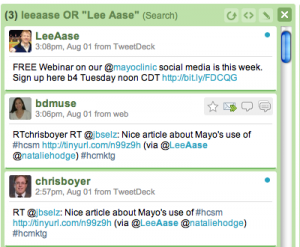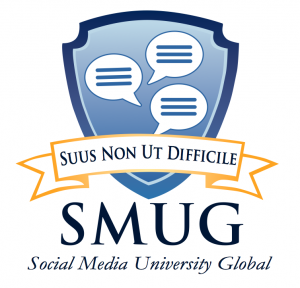This afternoon I’m scheduled to present a Webcast on our Mayo Clinic experience with social media. The handout we provided to registered participants was somewhat abbreviated (leaving out some of the intermediate steps in the closing case study), and I added a few other slides after Friday morning, when I had to submit the handout.
If you haven’t yet registered for this FREE webcast, you can still do so until noon CDT today (8/4/09). Go here to join.
Here is the updated slide deck, and I’ve also included some key links below:
See the Press page for some of the stories about social media in health care for which I have been interviewed, including the Forbes.com story from last week and the resulting Information Week piece from yesterday, as well as the interview with Lee Odden he published yesterday.
Our Mayo Clinic blogs include Sharing Mayo Clinic, which has links to the rest of our social media platforms, including the various blogs and our Facebook fan page, Twitter account and YouTube channel.
Here is the link to the Wall Street Journal Health Blog post that incorporated our YouTube video. Here is a recent post on the Mayo Clinic News Blog with both downloadable audio and video clips and a YouTube video. And here is the post where we embedded the “Octogenarian Idols” video.
I hope you will feel free to ask your questions or make comments either below or via the #mayoragan hashtag in Twitter.
If you’re interested in healthcare use of social media, please consider registering for this social media summit Mayo Clinic is hosting and cosponsoring with Ragan Communications. It will be at our Scottsdale, Arizona campus in early October. I think we have a strong faculty and it should be a great gathering of people with a common interest.
Please be sure to vote in the SMUG seal contest, and if you want an example of the SMUG curriculum, the Podcasting courses give you a good taste. See the front page for more of a SMUG overview.


